The Haw
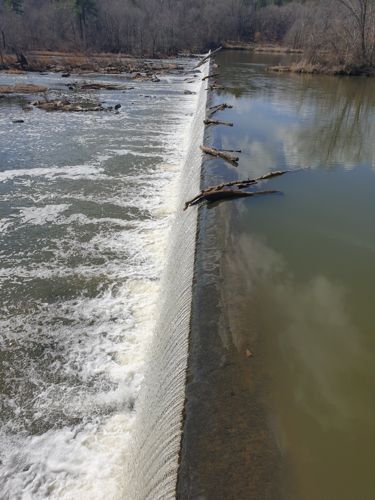
Of all the places in North Carolina I'll think back on fondly some day, the Haw River is probably the one I'll miss the most.
Continue reading "The Haw"


Of all the places in North Carolina I'll think back on fondly some day, the Haw River is probably the one I'll miss the most.
Continue reading "The Haw"
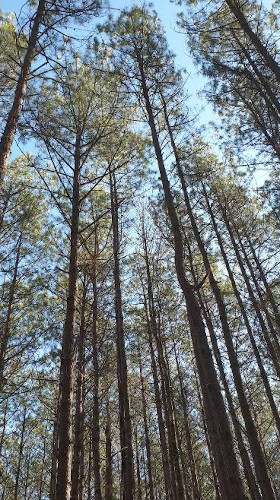
I first discovered that lovely little patch of loblollies only a month or two after arrival. Growing at a forgotten intersection between two busy roads, it was a dense, green wall seen at high speed between other destinations.
I first walked it one cloudy afternoon in early winter, footsteps silent on the dense, matted needles. I returned several times, and found it different each time. But last January was the most memorable: the morning after a decent snowfall, the forest was another world, white and green overhead, the morning sun bright against a cerulean sky. But not silent: the strong winds were moving the treetops and the forest was a tapestry of whispers. Continue reading "Whisper in the Pines"
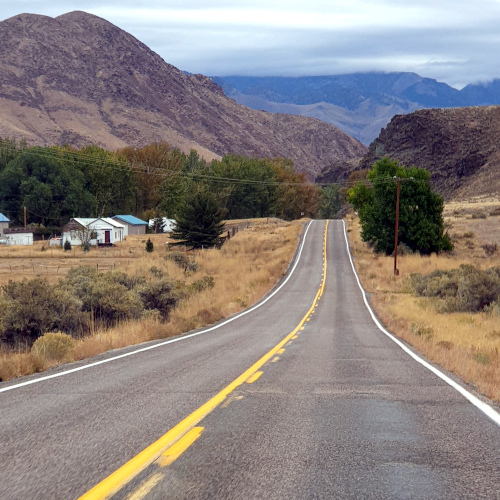
Idaho, October 2022: a land whose beauty and intrigue swelled as I ventured north. I remember back to my disappointment in the summer of 1998, when my Greyhound bus crossed both Montana and Idaho at night, leaving me in western Washington state at dawn. Those were the two places I was most excited to see.
And now I'm in Stanley, a mountain outpost 6253' above sealevel, nestled at the foot of the fierce-looking Sawtooths. To get here I've topped the ridge at Mount Galena (now riven in streaks of burnt trees and charcoal). The road is easy and driveable, but the snow-stakes that mark the edge are a towering 8' high, a silent reminder this is the land of winter. I drive under a grey band of strata clouds that forces the morning light in at angles, like a cat under the duvet. The mountains glow with morning and are extinguished as I move northward. This valley is glacial for sure, plunked at the bottom of the rounded bathtub basin drained by the Salmon River. Continue reading "From Stanley to Salmon"
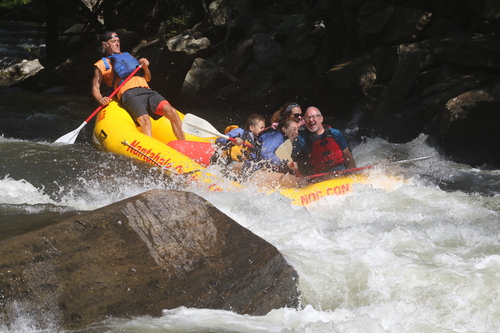
This is the money shot, the one they sell you afterwards for $20. It's full of excitement and energy and features what looks like me, crying like a baby (the water was cold!). But it fails to capture all the things I will remember most about this excursion.
The setting is the Nantahala River Gorge; the trip is courtesy of the Nantahala Outdoor Center (NOC), who runs guided rafting trips down the river all summer. I'd wanted to do this since I first saw it last summer. Our guide was a gentleman named Malcolm, who at 60 years old was in the kind of physical shape you can only maintain if you have a job like guiding rafts, and he was knowledgable and had a respectful, loving connection to the natural world I appreciated. All the rest of this trip's magic goes unrecorded: Continue reading "Nantahala Gorge: land of the noonday sun"
A first memory: we're leaving the big city under a heat warning and three-digit, mid-summer temperatures. We cross into North Carolina just as a thunderstorm sweeps down across the forests and drenches everything in relief. The forests: they're everywhere, green and dark and lovely, thick with shadows and a thousand shades of green, rich with the smell of summer rain.
A second memory: it's our first week, the boxes are still heaped in corners; we are finding our bearings. In the early morning sun, an enormous buck dozes quietly at the forest edge behind our house. He's magnificent, stately, majestic, and offers some sort of welcome to this new, sylvan lifestyle. The White-tailed deer, Odocoileus virginianus. Continue reading "Building Forests"

My ignorance unfurled before me like a sail.
Recently arrived in North Carolina, I bought a topographic map of the state and let my eyes explore. My gaze went naturally westward into the crinkled, mountain ridges of the higher elevations, picking out interesting places to explore. The name "Cherokee" leapt out at me. “Huh,” I thought to myself, “Cool name, like the old Native American tribe. Wonder if they're related?”
Of course they're related. Continue reading "Oconaluftee and the Trail of Tears"
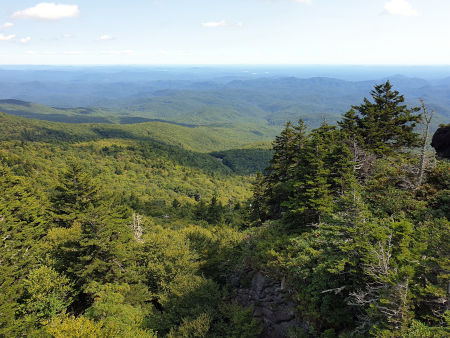
Circumstances not of my own making brought me from one spectacular, mountainous state to another. Settling into North Carolina's Piedmont, the maps pointed me westward to the Appalachians, unique on Earth. Nowhere have I seen it better described than here, by Sheila Turnage1.
How did the Appalachians come to be here? The Cherokee, who have lived here for thousands of years, say that one day long ago, the Great Buzzard swooped low over the new earth. His wings brushed the impressionable earth, creating the mountain ranges that rise and fall, and then fade into sky. Geologists envision a wilder scenario.Continue reading "Tanawha"
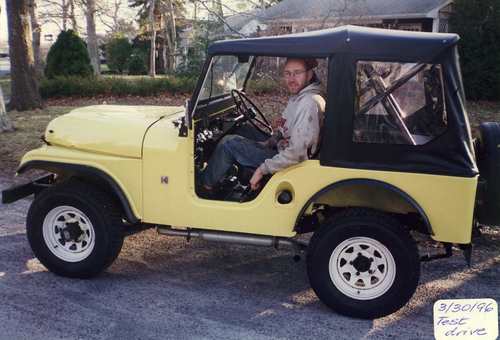
In my 49 years on earth, I've learned only one thing with total certainty: it's that any bad day can be cured by a drive into wild spaces in a classic Jeep. This fact has accompanied me through life. Pretty sure my dad taught it to me. If so, he was right.
This is the story of my Jeep. Not any Jeep, mind you: it joined the family before I did. I laugh when I see ads for "vintage" Jeep Wranglers that date back to the early 2000s. Mine was a 1968, older than me. Before the Wrangler was the AMC and before that was the Kaiser, only one short generation removed from the old Willys that had served hard time in World War II. And it was still largely unchanged in design. The Kaiser was still so simple you could airdrop it to troops in a palletized container and have them assemble it in the field. In the winter you froze, in the summer you cooked. If it rained, you stood a decent chance of getting wet. But it was a Jeep: worth it!
Continue reading "The '68 Jeep"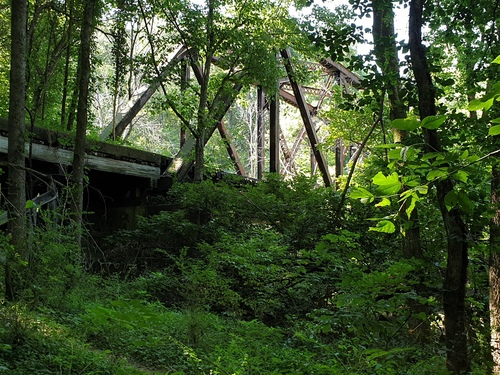
Back when North Carolina was called the Rip Van Winkle state, asleep while industry raged on all sides, local industrialists shared a vision of prosperity that only rail builders could usher in. It was the late 1800s, just four decades after the cease of Civil War hostilities, and North Carolina was suffering. But before the century would end, a network of steel rail would connect North Carolina's textile mills and tobacco farms to the markets of Virginia and harbors on the Atlantic. And there they would stay for about a century before consolidation, truck traffic, and changing interstate markets would make some of them superfluous.
Rail lines are tough to make disappear, though. So if you know where to look, you can still find their bones slumbering under forests. And Lord they are beautiful. Continue reading "Slumbering Giants: the End of Rail"
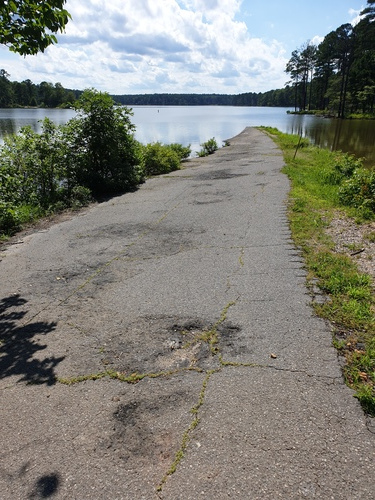
Nothing gets the pulse racing like escaping from the world we're living in now, and discovering the worlds that lived before us: it's a reminder that nothing lasts forever, not even this.
North Carolina's Haw and New Hope River valleys were formerly prone to horrific flooding. The hurricane of 1945 was one of just many hurricanes that laid siege to what was already a poor valley, putting it under water. The US Army Corps of Engineers came up with a plan to flood it permanently, offering a mechanism of flood control and providing hydropower for electrification of the region. When it was done, Lake B Everett Jordan had become a permanent fixture on the Piedmont landscape. Continue reading "The End of the Road"

In the clarity of hindsight, I perceive I didn't find Nunn Mountain as much as I succumbed to its charms:
Quiet, verdant whispers slip through, borne in the soft breezes of late summer,
Shadows are suspended from the bright needles of Loblolly Pines. Continue reading "Pilgrim on Nunn Mountain"
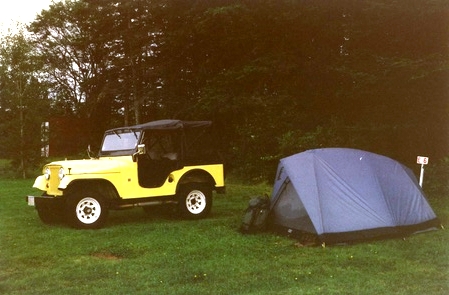
Maine gradually turned quieter and quieter as I passed Portland and the roadway passed almost exclusively through trees. Northern Maine has some of the most gorgeous scenery of the Northeast, and yet so few live there to appreciate it. More than once I worried about running out of gas on the more distant stretches. By that measure, the border town of Callais (pronounced "callous", ha ha ha) was a metropolis of international shopping and dining under both New Brunswick and American flags.
The weather was cooling already in early fall, though it was hard to tell by glancing up at the omnipresent conifers. The water had turned a deeper shade of blue with the arrival of September's chill, and I didn't relish jumping in it. The road was long and life was good. Continue reading "The Bay of Fundy"
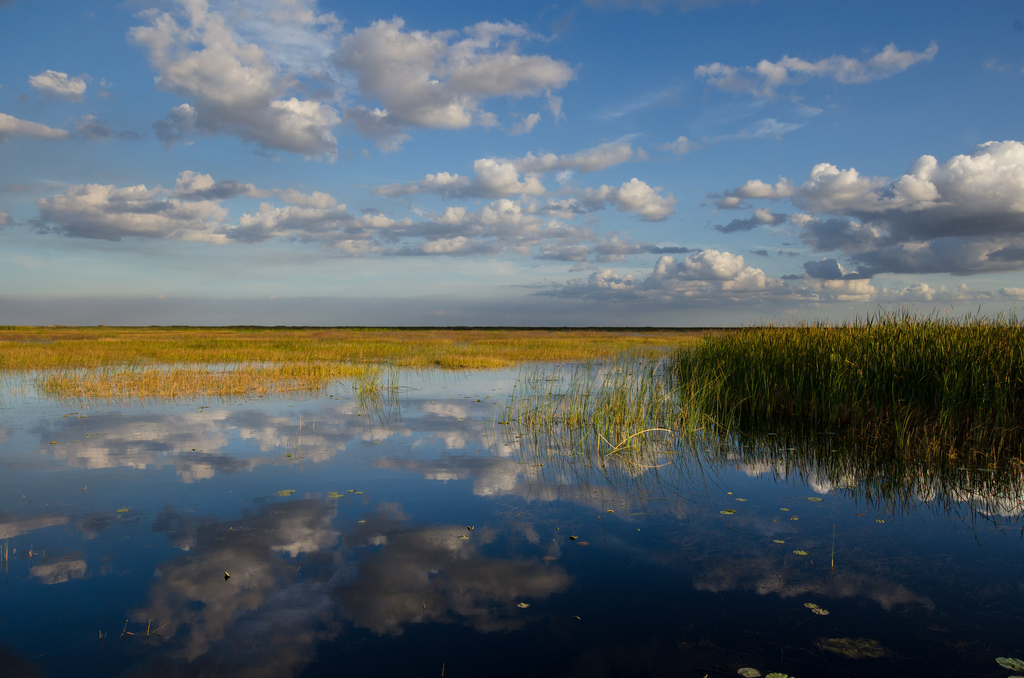
I had a Saturday free and decided to get out and do some hiking, South Florida style. That is: at risk of being chomped by a 'gator, in land only marginally drier than the swamp from which it emerged.
Lake Okeechobee was my first destination: it draws your eye inexorably as you gaze upon the southern half of Florida, and around it was a massive earthen dike with a hiking trail at its top. Built in the early part of the 21st century to control the sloshing floods of Lake Okeechobee, it thoughtfully included a hiking trail that permitted you to essentially circumnavigate Lake Okeechobee if you had enough time, stamina, and a decent rain jacket. The thing is perfectly flat, like tracing a doughnut. In fact, the lake's low profile is behind the flooding: it's basically a shallow lens of water, that passing hurricanes and storms were able to coax into sloshing up and over the low rim and into the surrounding farmland. Continue reading "Hiking the Rim of Lake Okeechobee"